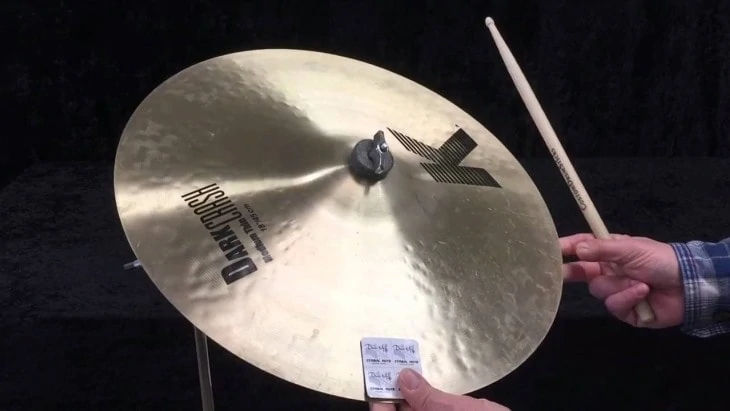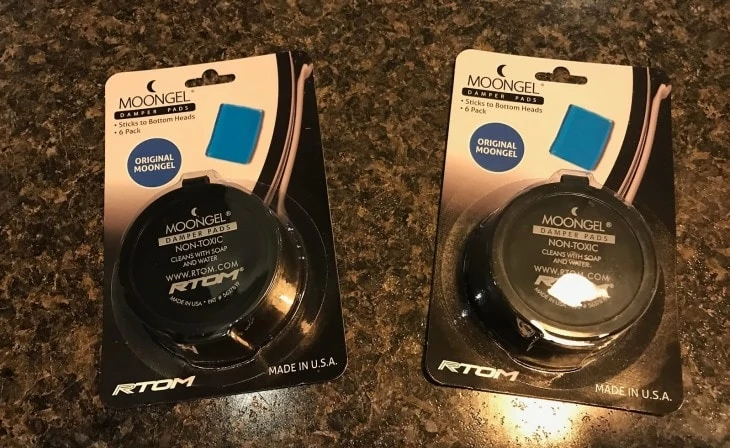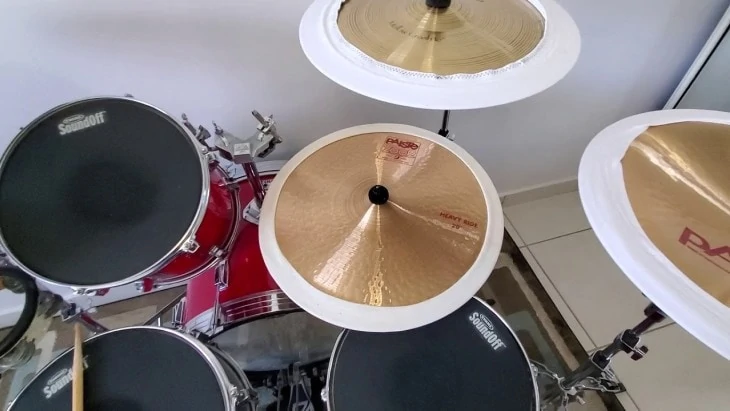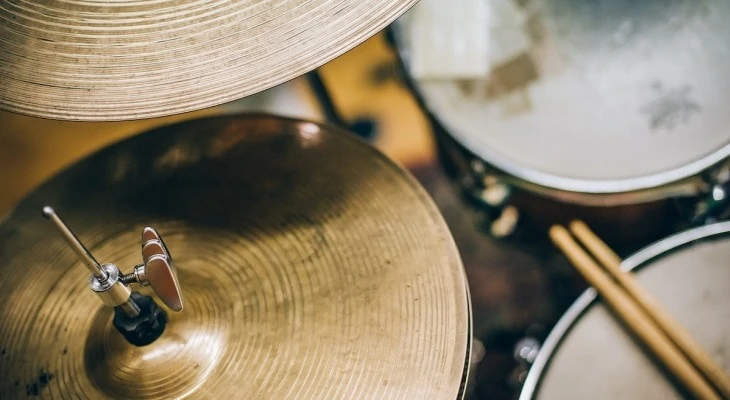With cymbals being such loud forces of nature, you may find yourself in situations where you need them to be a little softer. You could choose to get some cymbals that are warm and dry that don’t resonate as much.
However, not everyone has the budget for that. So, here are some things you can do to dampen current cymbals that are booming through your household.
Table of Contents
Tape

Duct tape truly is the solution to most things. There isn’t much it can’t fix. Putting tape on cymbals is a timely tradition that dates back decades. Putting tape on a cymbal will lower how much it resonates, leading to a softer sound.
The thicker the tape you use, the more it will deaden the sound. Be careful not to put too much as it could lead to the cymbal sounding like a piece of cardboard. The best type of tape to use has to be insulation tape.
Insulation tape is thick enough to control the sound, but not dense enough to completely kill it off. The placement of the tape will also determine the end result sound. Firstly, you should place it on the bottom of the cymbal so that you don’t need to have it visible. Aesthetics is one of the important parts of drumming, after all.
Tape placed near the center of the cymbal will help dampen the bow sound as well as the bell tone. Tape placed near the edges will dampen the sound when you crash on it. It’s a good idea to vary the tape placements so that you cover all the bases.
One big disadvantage of using tape is that it tends to leave a sticky residue when you pull it off. It’s a bit of a hassle to get rid of, especially when the tape has been on there for a long time.
So, tape would be the ideal dampening solution if you were to leave it permanently on the cymbals.
Moongel and Alternatives

Moongels are those popular blue pieces of gel-like substance that drummers put on their drums. They’re designed to dampen skins to stop unwanted overtones. They work wonderfully on cymbals as well. However, this is a DIY tutorial, meaning we need to find some inexpensive alternatives.
If you’re someone who has kids, you may already have the perfect tool at your disposal. A great alternative to Moongels are those sticky hands that children play with. They’re pretty much the same thing but cost a lot less.
If you take one of those sticky hands and put it on a cymbal, it will dampen it like a charm. The more you put on, the more dampening they’ll do. Any other gel-like material will work the same way.
The great thing about this solution is that it’s not as permanent as a tape is. You can take the sticky material off after playing every time and there’ll be no residue left over. It’s very easy to put on and take off.
However, there will be some residue if you leave it on too long. There’ll also be a lot of harm done to your cymbals if you leave them in the sun with sticky material on them.
Old T-Shirts
If you’re looking for a quick fix for your short practice session, try throwing some t-shirts over your cymbals. The shirts will quickly alter the tone of the cymbals, dampening all the overtones and choking the resonance.
This will give you some quiet instruments to play on without worrying about making a huge noise. I’d suggest using old t-shirts that you don’t mind getting damaged as hitting them with sticks can leave marks or potentially rip them up after heavy use.
You may even see some pro drummers put shirts on their cymbals. It’s become a bit of a trend in small modern drumming circles, thanks to drummers like JD Beck. The shirt gives the cymbal a slight boost in rebound, allowing you to play faster patterns.
The downside to this is that it drastically changes how the cymbal sounds. So, a cheap cymbal with a shirt on will sound the same as an expensive cymbal with a shirt on. I’d suggest going with the tape or gel option if you want to preserve the cymbal sound.
Cymbal Muting Accessories

There are many products out there that are specifically designed to dampen cymbal sound while still giving you playable surfaces. If you’re a keen DIY person, you could make something very similar to these products with some rubber material.
You’d need to carve out rubber to fit each cymbal’s surface. The hi-hat would have the smallest piece while the ride cymbal would have the biggest. You’d then need to find a way of attaching the rubber to the center of the cymbal so that it doesn’t fall off when playing.
Creating your own cymbal mutes can take a bit of time. However, they’ll be highly worth the effort in the long run. If you’re not too keen on doing that, try the tape, gel, and t-shirt options.
Low Volume Cymbals
If the tape, gel, t-shirt, or cymbal mute options aren’t working for you, you may just need to invest in some low-volume cymbals. These are cymbals that have many drilled holes to lower the sound.
The great thing about them is that they feel like real cymbals and produce similar tones, yet they’re about 80% quieter than the real deal. You could be bashing out on a set of low volume cymbals in one room and the person in the next room wouldn’t hear a thing.
The most popular low volume cymbals on the market are the L80s by Zildjian. They come in a range of different sizes and feel really good to play on. Another great option is the Sabian Quiet Tones. They’re very similar to the L80s, but they have a distinct silver finish.
The downside of getting these types of cymbals is that you’ll be spending a bit of money whereas the other dampening solutions won’t cost much at all. However, low-volume cymbals are the quietest option you can go for where the cymbals still feel and sound natural.
Conclusion
Some other things to think about when it comes to loud cymbals is how you’re playing them and what sticks you’re using. The size of your sticks can make a huge difference in your drum sound and how loud it is. Thinner and lighter sticks will obviously make the cymbals sound a bit quieter.
These dampening techniques also work for the drums in your setup. So, try them out on the skins if you want an overall quiet drum kit to play on. The pros and cons of each technique are very similar when it comes to drum skins.
It’s important to familiarize yourself with how to dampen drums and cymbals as you never know when you’re going to need to do it in the future. Having that old t-shirt to pull out or that prized roll of duct tape is extremely beneficial for all drummers.
So, give these methods a go and enjoy your quiet practice sessions.

